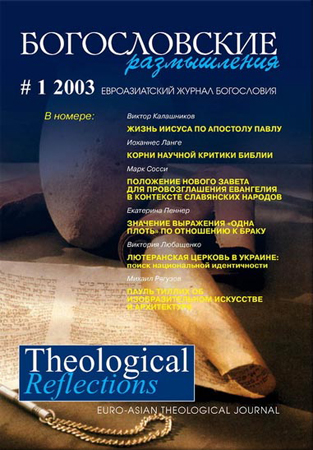Paul Tillich, s Position on Visual Arts and Architecture
Keywords:
Paul Tillich, Position on Visual Arts and Architecture, Christian complexesAbstract
In this article the major ideas of an outstanding Protestant thinker of the twentieth century are reflected, those of Paul Tillich, who successfully worked «on the border» between theology and philosophy that is typical for classical German and existential philosophy, and liberal theology.Tillich’s contribution to the theological-philosophical concept of art is shown, in particular his understanding of the interaction of expressionistic, idealistic and naturalistic elements in art, where preference, completely justifiably, is given to the expressive element. The thinker solves the dual functional-symbolical nature of architecture by sanctioning the contradiction between symbolical tradition and symbolical spontaneity in architecture. Paul Tillich’s consideration of discretion and continuity in architectural space, and the significance of color and light in church architecture is of great importance. Convincing affirmation of this are the architectural executions of modern, multi-purpose, public, Christian complexes such as St. Lavrenty in Stuttgart (Germany), Myyrmaku (Finland) and Graz-Zagniz (Austria) considered in the article.
References
- “Evangelisches Gemeindezentrum Laurentiuskirche in Stuttgart-Rohr.” Die Zeitschrift Architektur+Wettbewerbe №133, 1988.
- Gieselmann, Reinhard. “Entwicklungstendenzen des modernen Kirchenbaus.” Die Zeitschrift Architektur + Wettbewerbe, №115, Sept. 1983.
- Heatcote, Edwin and Iona Spens. Church Builders. New York, 1997.
- Henel, Ingeborg C. Philosophie und Theologie im Werk Paul Tillichs. Frankfurt and Stuttgart, 1981.
- Tillich, Paul. “Zur Theologie der bildenden Kunst und der Architektur.” Kunst und Kirche, №3, 1961.
- ___________. Auf der Grenze. Munich and Hamburg, 1962.
- ___________. “Der Protestantismus als Kritik und Gestaltung.” Schriften zur Theologie, 1962.
- ___________. “Theology of Culture” in Selected Works. Trans. from English. Moscow: Jurist, 1995.
Downloads
How to Cite
Issue
Section
License
Copyright (c) 2020 Michael RIAGUZOV

This work is licensed under a Creative Commons Attribution-NonCommercial 4.0 International License.
All articles published in the Journal are distributed under a Creative Commons Attribution-NonCommercial 4.0 International License
By submitting an article for publication in Theological Reflections: Eastern European Journal of Theology the author grants the editors the right to publish the article and distribute it in electronic and print form.
The author reserves all copyrights and the right to use the materials of the article in whole or in part for educational purposes, to write his own dissertations, to prepare abstracts, conference reports, oral presentations, etc., as well as post electronic copies of articles (including the final electronic version downloaded from the journal’s official website) on non-commercial web-resources without the consent of the editorial board and founders.



